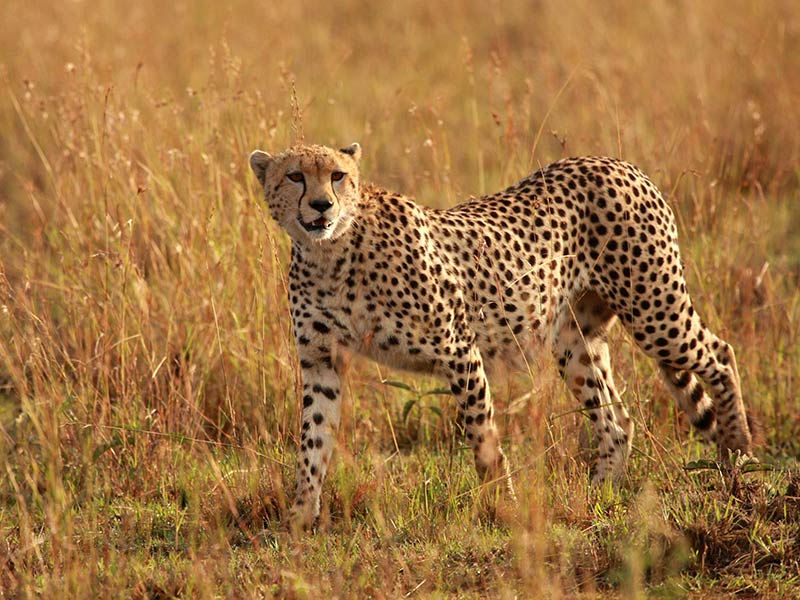rajkotupdates.news:cheetah-magnificent-but-fragile-experts-list-concerns-for-cheetahs: The cheetah, with its stunning speed and grace, is an iconic symbol of the African savannah. However, this majestic species faces numerous challenges that threaten its survival. In recent years, the cheetah population has declined significantly, primarily due to habitat loss, poaching, and human-wildlife conflict. This article aims to explore the concerns surrounding cheetah conservation and propose potential solutions to ensure the long-term survival of this remarkable species.
Also Read: rajkotupdates.news : youtuber carryminati appointed as winzo brand ambassador
Habitat Loss
One of the primary threats to cheetahs is the loss of their natural habitat. Rapid human population growth and expanding agriculture have led to the conversion of vast grasslands and forests into farmland and urban areas. As a result, cheetahs are losing the open spaces they require for hunting and roaming. This habitat fragmentation also isolates cheetah populations, limiting their genetic diversity and increasing the risk of inbreeding.
To address this concern, conservation efforts should focus on preserving and restoring cheetah habitats. This includes creating protected areas, establishing wildlife corridors to connect isolated populations, and promoting sustainable land-use practices. Collaborative initiatives involving local communities, governments, and conservation organizations are crucial for successful habitat conservation.
Poaching and Illegal Wildlife Trade
Poaching poses a significant threat to cheetahs, primarily driven by the demand for their skins, bones, and other body parts in the illegal wildlife trade. Cheetahs are hunted for their beautiful fur, which is highly valued in the fashion industry. Moreover, their bones are used in traditional medicine practices. The illegal wildlife trade not only decimates cheetah populations but also undermines conservation efforts.
To combat poaching, strong law enforcement is essential. Strengthening anti-poaching units, improving surveillance and intelligence gathering, and implementing strict penalties for wildlife trafficking are vital steps. Additionally, raising awareness about the negative impacts of the illegal wildlife trade among consumers and advocating for ethical and sustainable fashion choices can help reduce the demand for cheetah products.
Also Read: rajkotupdates.news : youtuber carryminati appointed as winzo brand ambassador
Human-Wildlife Conflict
As human populations expand into cheetah territories, conflicts arise between humans and cheetahs. Cheetahs occasionally prey on livestock, leading to retaliatory killings by farmers seeking to protect their livelihoods. In many cases, these conflicts result from a lack of alternative income sources for local communities and insufficient measures to mitigate human-wildlife interactions.
To address human-wildlife conflict, it is crucial to implement measures that minimize livestock depredation while providing alternative livelihood options for communities living near cheetah habitats. This can include the development of predator-proof enclosures for livestock, compensation programs for farmers who suffer losses, and community-based conservation initiatives that generate income through ecotourism or sustainable agriculture.
Genetic Diversity and Captive Breeding
Cheetahs face another unique challenge: their genetic diversity is alarmingly low. Due to past population bottlenecks, cheetahs exhibit reduced genetic variability, making them more susceptible to diseases and less adaptable to changing environments. Inbreeding depression can lead to decreased reproductive success and weakened immune systems.
Captive breeding programs have played a crucial role in preserving cheetahs and maintaining genetic diversity. Breeding centers and sanctuaries around the world provide a safe haven for cheetahs, allowing for genetic management and reintroduction efforts. However, ensuring the success of captive breeding programs requires collaboration between institutions, careful genetic selection, and regular reintroduction efforts to maintain wild populations.
Also Read: rajkotupdates.news : youtuber carryminati appointed as winzo brand ambassador
Conclusion
The future of cheetahs hangs in the balance, with habitat loss, poaching, human-wildlife conflict, and genetic limitations threatening their survival. Preserving their majestic presence requires a comprehensive approach that combines habitat conservation, anti-poaching measures, community engagement, and genetic management. It is imperative that governments, conservation organizations, and local communities work together to address these concerns and secure a future where cheetahs can thrive in their natural habitats. By implementing these solutions, we can help ensure that the beauty and grace of cheetahs continue to enrich our world for generations to come.








